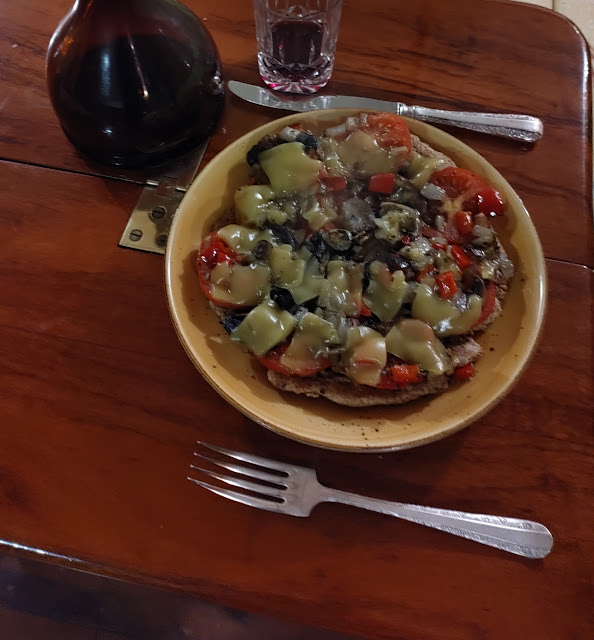- Cut baking parchment into 6 sheets, approximately 200/8" x 150/6".
- Put the couscous in a large bowl.
- Mix the yeast extract/miso in 2/3 cup boiling water and then pour it over the couscous. Cover the bowl and leave it for about ten minutes until the water has been absorbed.
- Now mix the seasoning into the couscous.
- Add the 1/4 cup of water and mix well.
- Then add the soya sauce, followed by the vinegar, tahini and oil. Mix this all very thoroughly, because once you have added the vital wheat gluten it will be difficult to incorporate the other ingredients evenly.
- Now add the chickpea flour and the vital wheat gluten and quickly mix it in to the rest of the ingredients. Again do this very thoroughly. I find a butter knife the best tool.
- Mix as well as you can with your knife and then use your hand, incorporating all the flour that will be trying to stick to the edge of the bowl. Keep mixing until everything until you have a smooth dough and it stops sticking to your hands. You should end up with a fairly soft mix.
- Place the dough on a board. (Make sure you clean the bowl really thoroughly, because the gluten sticks as soon as it dries out, making it quite difficult to clean. Soak it for a while if you've left much behind, before cleaniing.) Roughly shape it into a rectangle about as long as you want your sausages to be. (The dough is nowhere near as accommodating as bread dough when it comes to shaping).
- Cut the dough in half and then thirds so that you have six equal lumps of dough. I usually have to pinch a bit of dough from one or two to get them all more or less the same size.
- Shape the sausages to be best of your ability – the wrapping finishes the job. Don’t worry about gaps and creases. The cooking sorts out most of that. It would be fun to try to make one long sausage, wrap it up in baking paper and then form it into a coil to put onto the trivet. This would produce and authentic Cumberland sausage shape, which would be fun and impressive, but I’m not sure how well it would work.
- Now put each sausage, centred at the edge of a piece of baking paper and roll it up tightly. This helps make it round. Twist the paper at either end, until it is squashed against the end of the sausage. Do this with all six sausages.
- Put the trivet into your pressure cooker. Add about half a cup of water – don’t let it cover the trivet. Place the sausages onto the trivet – it doesn’t matter if they are stacked – and bring up to pressure; cook for 5 minutes.
- Let the pressure come down naturally.
- you can use fine bulgar wheat instead of couscous if you prefer. Or even soft breadcrumbs if you don't mind making your lovingly baked bread into breadcrumbs!
- If you don’t have ground nutmeg or mace (which don’t keep well ready-ground) grind up about 1/2 a nutmeg in a mortar or blender. Remove 1 1/2 tsp and add to a bowl.
- Take several blades of mace, grind to a powder, remove 1 tsp and add to the nutmeg.
- Now add all the rest of the ingredients and mix thoroughly. Put into a glass jar and keep as cool and dark as feasible.










